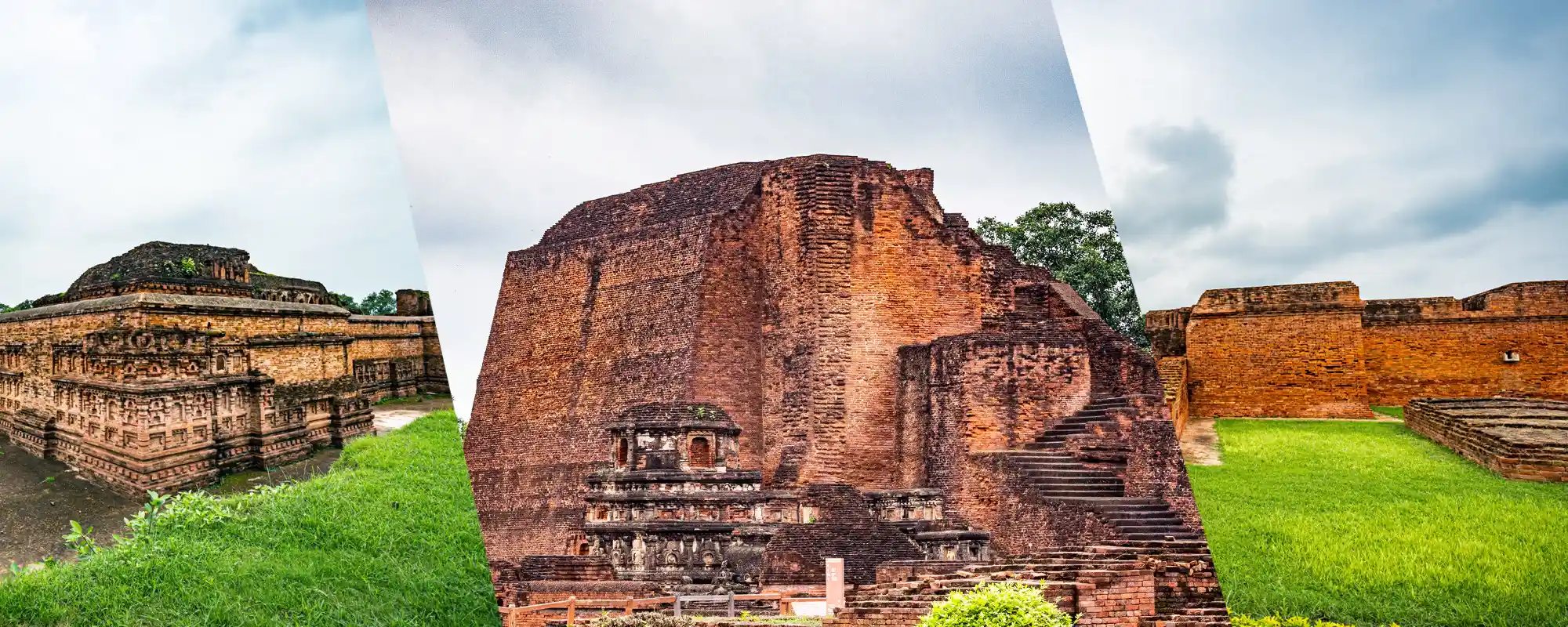
There are archaeological remnants of a Mahavihara, or Buddhist monastery, in Nalanda, close to Patna, which was one of India's first and best colleges. During ancient times, this monastery and academic establishment was situated in the Magadha kingdom, which is now the contemporary state of Bihar. Currently, Patna, the capital of Bihar, is around 84 kilometres distant from the Nalanda University Archaeological Complex. The complex offers a fascinating look into Buddhism, history, architecture, and culture. When making travel plans to Patna and reservations for hotels, if you love history, be sure to add a visit to this old institution.
The Nalanda academic institution has its roots in the fifth century CE, and for 800 years it operated without interruption as a highly regarded centre of study. During the fifth and sixth centuries, the Gupta dynasty emperors supported the institution, which flourished. Emperor Harshavardhan of Kannauj, who ruled throughout the seventh century, allowed it to continue to prosper. Up until the ninth century, the university's expansion and popularity persisted; after that, a slow decline began.
This decrease was largely brought on by the founding of four other Buddhist universities in the same area under the Pala Empire's rule from the ninth to the twelfth centuries. According to historians, Bakhtiyar Khilji of the Delhi Sultanate raided and destroyed this important centre of learning in the 12th century, which caused the institution to completely deteriorate and be abandoned.
At its height, the college also drew students and academics from remote locations including Central Asia, Tibet, China, and Korea. More than 2,000 instructors and 10,000 kids called it home. According to history, in the fifth and sixth century, Mahavira and Buddha both travelled to Nalanda. In the seventh century, eminent Chinese scholar Hsuan-Tsang also paid a visit to the university to study the Vedas, Buddhist theology, and metaphysics.
Following its fall, Nalanda was forgotten until the Archaeological Survey of India began undertaking excavations there in the 19th century. Numerous ruins have been found as a result of these digs, however they only represent a small percentage of the entire Nalanda institution.
Nalanda was recognised as a marvel of architecture. The institution, which was encircled by a high wall and a large gate, was made up of a number of temples, viharas (educational and residential structures), courtyards, stupas, classrooms, and meditation halls. The institution's grounds were additionally embellished with lakes and parks. The institution's unearthed remnants show that vivid red bricks were utilised in construction. One of Nalanda's greatest attractions was its enormous library, which was well-equipped and was housed in three imposing multi-story structures known as the Ratnasagara (Ocean of Jewels), Ratnaranjaka (Jewel-adorned), and Ratnodadhi (Sea of Jewels). The most precious texts of the organisation were preserved in Ratnodadhi, a nine-story edifice.
Nalanda thrived in the Middle Ages on a vast complex, but only a small section of that vast site has been unearthed thus far. On the location now, all that is left are the remains of the Nalanda Mahavihara. However, the Nalanda Ruins are among the most important historical sites in and surrounding Patna because of its cultural, educational, and religious importance. It is a significant location for anyone researching the Buddhist tourism industry and a prominent tourist destination in India. As part of India's UNESCO World Heritage designation, the Nalanda remains have also been acknowledged. The Archaeological Survey of India now owns, cares for, and protects the Nalanda University Archaeological Complex. The excavation site also includes temples, a museum, and the remains of other buildings.
Summers : 9 AM to 5 PM
Winters : 9 AM to 4.40 PM
Timings : 9AM-5PM
Weekly Off : Friday
Final Sale Of Tickets : 4:45 PM
You may get a sense of the things that were in use at the height of the Nalanda Mahavihara by visiting the museum.
Museum hours are 10:00 am to 5:00 pm, with Fridays off.
Museum Entry Fee: Rs. 5 per person; kids under 15 enter free of charge.
For Indians & Residents of BIMSTEC and SAARC nation: Rs 15 and free for children under Rs 15
For Foriegners: Rs 200
Indian citizens can visit the Nalanda ruins for a lower price than foreign visitors. Indians are required to pay a 15 admission charge per ticket. Residents of BIMSTEC and SAARC nations must pay the 15 Rs. ticket. The entrance cost for foreigners is 200 Rs. Children under the age of 15 are admitted free of charge. Nalanda University's grounds are open to photography and videography. The cost of a video camera is 25 Rs. The cost of an official guide depends on the number of visitors in the party and starts at 200 Rs.
The Gupta dynasty constructed Nalanda University, which was assaulted three times by invaders: the Huns, the Gaudas, and Bhaktiyar Khilji. The burning library continued for more than five months. Ruins have a lot to tell yet. The library's splendour was unmatched at the time since it was the only international institution in the globe.
The Chhath Puja, or worship of the Sun deity, is exclusive to Nalanda. The most well-known one is at the Sun Temple in Baragaon, close to Nalanda, where fresh rice, treats, and fruits are presented as sacrifices. On the same full moon day in April or May, the Buddha was born, became enlightened, and gained nirvana. Baisakhi Purnima is thus observed as Buddha Jayanti in this country.
Copyright 2012-2022 Indiamap Digital Pvt Ltd. All rights reserved. Privacy Policy | Terms of Use